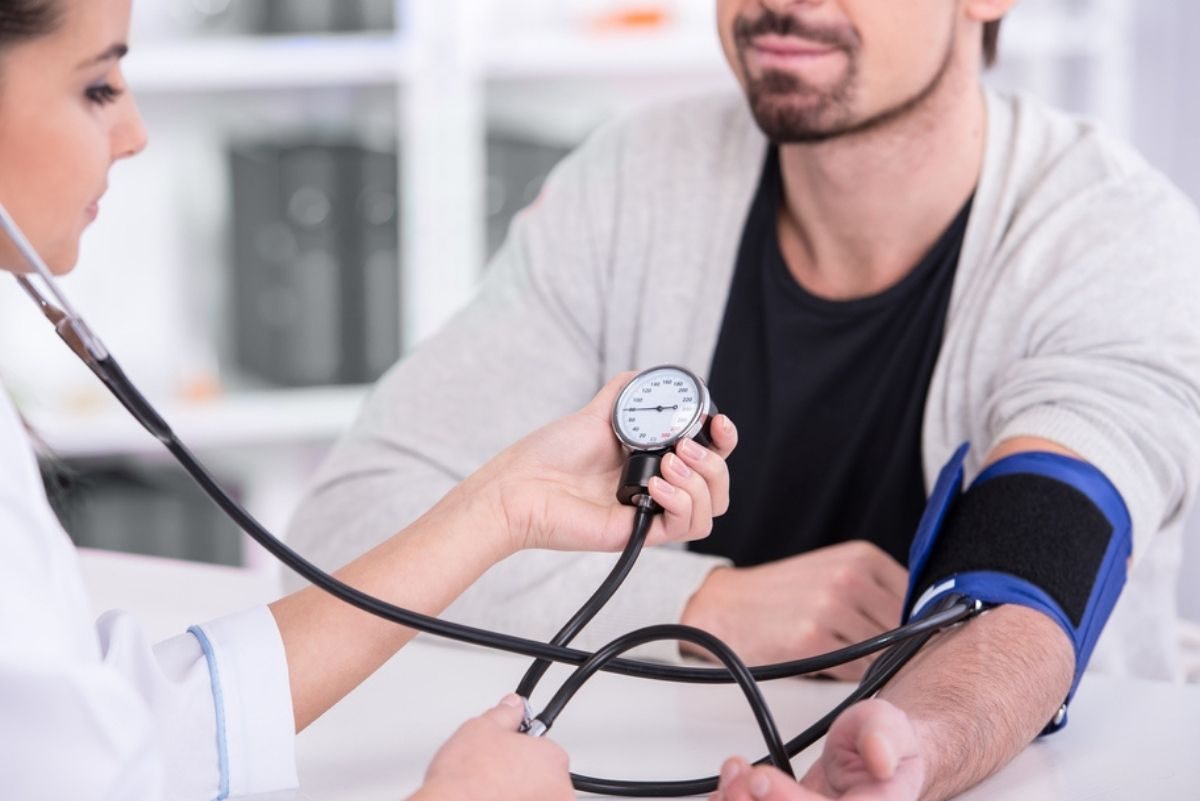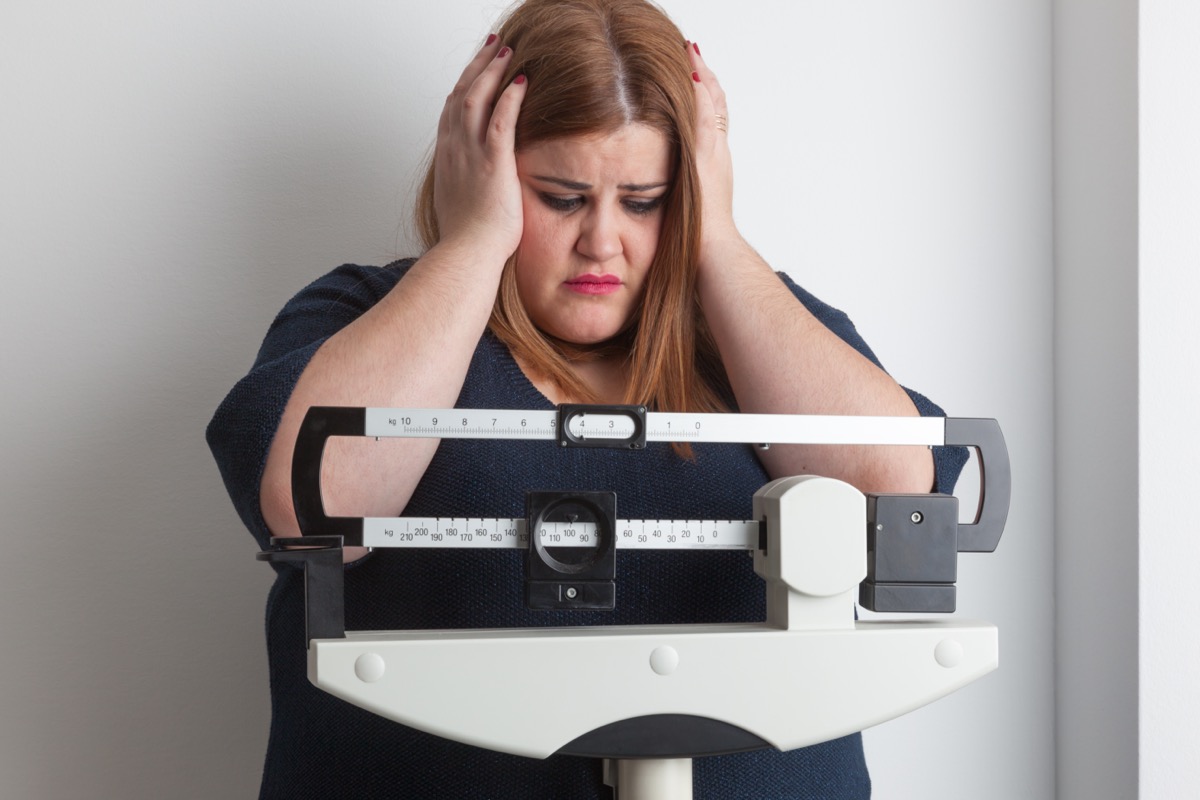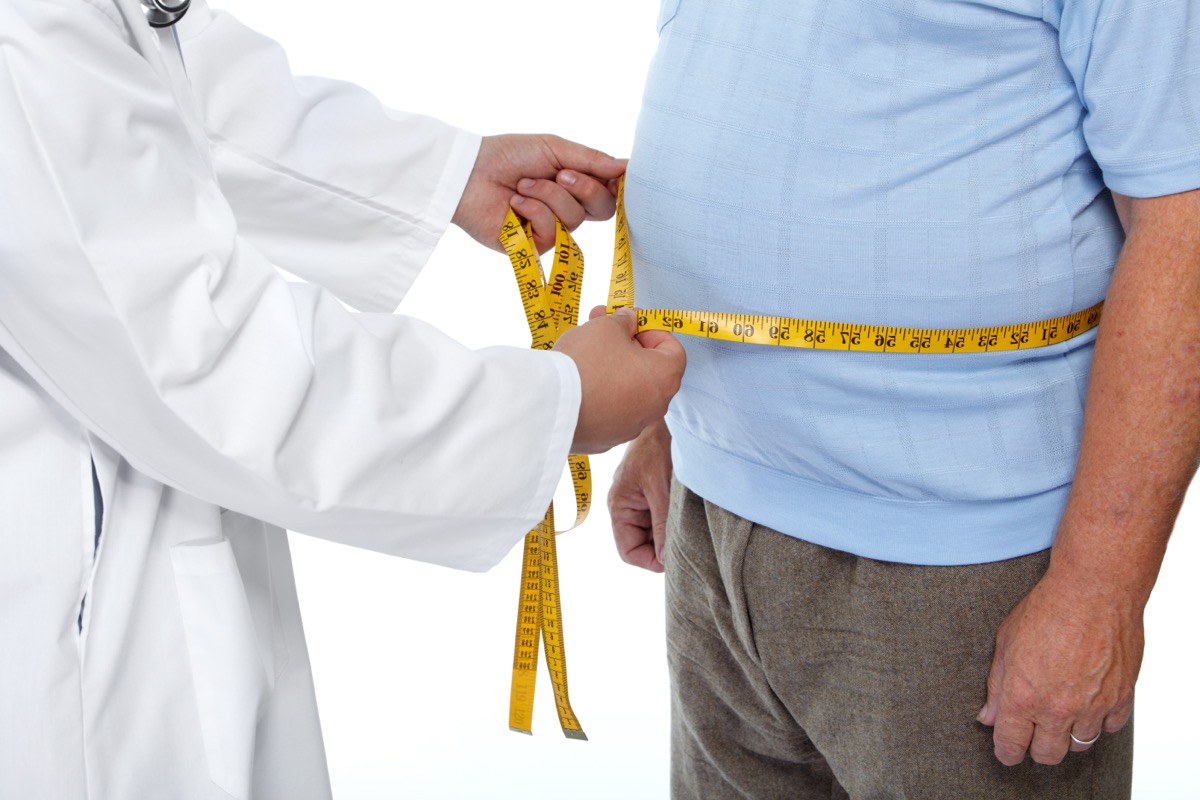Visceral fat is a hidden health issue that many people don't know about because it's not anything you can see or touch. Unlike subcutaneous fat that you can pinch since it's located under your skin, visceral fat is deep in your belly and it wraps around your vital organs, so you don't know it's there, but it is. It's a major health concern because it's been linked to stroke, diabetes, some cancers and more. While you can't see visceral fat, there are ways to tell if you have it and Eat This, Not That! Health spoke with experts who share five signs you need to seek medical attention for visceral fat. As always, please speak with your physician for medical advice. Read on—and to ensure your health and the health of others, don't miss these Sure Signs You've Already Had COVID.
John Angstadt, MD Director of Bariatric and Minimally Invasive Surgery at Staten Island University Hospital tells us, "An increase in visceral fat represents a serious health risk for you. If your BMI is over 35, it is time to make some changes in your diet and perhaps drinking habits. Working with medical professionals skilled in the new medications and techniques available for you is the best way to achieve this goal."

According to the Diabetes Community, "Carrying a high amount of visceral fat is known to be associated with insulin resistance, which can lead to glucose intolerance and type 2 diabetes. Researchers have found that visceral secretes a protein called retinol-binding protein 4 (RBP4) which has been shown to increase resistance to insulin."

The National Library of Medicine states, "Too much visceral fat deposits can lead to inflammation and high blood pressure, which increases the risk of serious health problems. It was found that in nondiabetic men, high body visceral fat, high blood pressure, and insulin resistance can cause interconnected abnormalities."

Kent Probst, personal trainer, kinesiotherapist and bodybuilder with Long Healthy Life says, "Your waist-to-hip ratio (WHR) may indicate that you have too much visceral fat. The waist-to-hip ratio is the circumference of the waist divided by the circumference of the hips. The health risks increase as the WHR increases. Under age 60, the health risk is very high for men when WHR is greater than 0.95 and for women when WHR is greater than 0.86. For people aged 60-69, the health risk is very high for men who have a WHR greater than 1.03 and women who have a WHR greater than 0.90."

According to Probst, "Having a large waist circumference may indicate that you have too much visceral fat. Having a waist circumference over 40 inches (102 cm) for men and over 35 inches (88 cm) for women is an increased risk for hypertension, metabolic syndrome, type 2 diabetes, dyslipidemia, cardiovascular disease and premature death."
The post 5 Signs You Need to See a Doctor About Your Visceral Fat appeared first on Eat This Not That.
----------------
By: Heather Newgen
Title: 5 Signs You Need to See a Doctor About Your Visceral Fat
Sourced From: www.eatthis.com/signs-you-need-to-see-a-doctor-about-your-visceral-fat/
Published Date: Sun, 18 Sep 2022 11:00:15 +0000
Read More
 HealthWellnessFitnessBeautyVideosPrivacy PolicyTerms And Conditions
HealthWellnessFitnessBeautyVideosPrivacy PolicyTerms And Conditions
